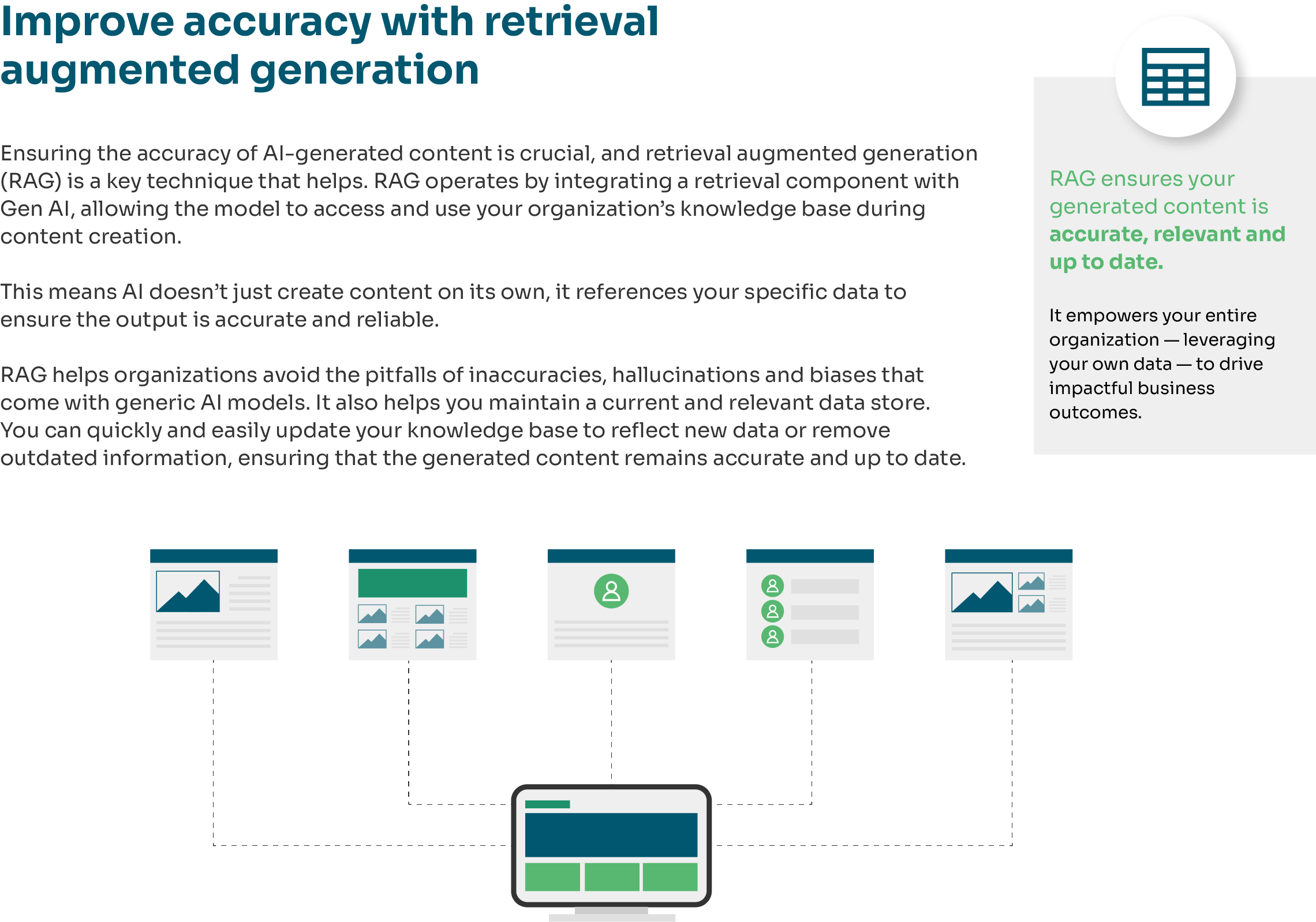Balancing Efficiency & Creativity
Introduction
In today’s fast-paced digital landscape, businesses are increasingly turning to artificial intelligence to streamline operations, boost productivity, and scale content creation. AI tools can generate blog posts, social media captions, ad copy, and even video scripts in seconds—saving time and resources. But as brands adopt these powerful technologies, a critical challenge emerges: how can companies leverage AI for efficiency without sacrificing the unique, human touch that defines their brand voice?
Maintaining a consistent brand voice isn’t just a nice-to-have—it’s essential for building trust, fostering customer loyalty, and standing out in a crowded market. Your brand voice reflects your values, personality, and the emotional connection you share with your audience. Lose that, and you risk sounding generic, impersonal, or worse—inauthentic.
This article explores practical strategies for integrating AI into your content workflow while preserving what makes your brand distinctly you. You’ll learn how to train AI models on your brand’s tone, style, and values, implement human oversight, and strike the perfect balance between machine-generated efficiency and creative, brand-aligned messaging.
—

What Is Brand Voice and Why Does It Matter?
Your brand voice is the unique personality and tone that comes through in all your communications. It’s not just what you say—it’s how you say it. Whether your brand is playful, professional, inspirational, or straightforward, your voice helps customers recognize and relate to you.
Why consistency in brand voice is non-negotiable:
- Builds trust and reliability
- Enhances brand recognition and recall
- Fosters emotional connections with your audience
- Differentiates you from competitors
Companies like Mailchimp, Innocent Drinks, and Nike have built iconic brands largely through consistent, distinctive voices. When you dilute that voice—even in the name of efficiency—you risk weakening your brand’s identity.
—

The Rise of AI in Content Creation
AI-powered writing tools like GPT-4, Jasper, Copy.ai, and others have revolutionized content production. They can draft articles, suggest headlines, generate product descriptions, and even create engaging social media posts in a fraction of the time it would take a human.
Benefits of using AI for content creation:
- Speed and scalability
- Cost-effectiveness
- Idea generation and brainstorming support
- Multilingual capabilities
However, these tools come with limitations. Most AI models are trained on vast datasets from the internet, which means their default output tends to be generic. Without careful guidance, AI-generated content can lack nuance, originality, and the subtle emotional cues that define your brand.
—

The Pitfalls of Generic AI Content
Relying solely on AI without customization can lead to:
- Bland, impersonal messaging that fails to resonate
- Inconsistent tone across different pieces of content
- Misalignment with brand values or audience expectations
- Repetitive or clichéd phrasing
For example, an AI might describe your innovative tech product as “revolutionary” and “cutting-edge”—terms so overused they’ve lost impact. Your brand, however, might prefer terms like “intuitive,” “elegant,” or “game-changing,” depending on your positioning.
—
How to Train AI to Mimic Your Brand Voice
Thankfully, most modern AI tools allow for customization. Here’s how to train AI to sound more like your brand:
1. Create a Brand Voice Guide
Develop a detailed document that outlines:
- Your brand’s personality traits (e.g., witty, authoritative, empathetic)
- Tone variations for different contexts (e.g., formal for emails, casual for social)
- Words and phrases to use—and avoid
- Sentence structure preferences (short vs. long sentences)
- Examples of on-brand and off-brand messaging
2. Use Examples and Style References
Feed the AI examples of your best-performing content, including:
- Blog posts
- Social media captions
- Email newsletters
- Product descriptions
The more examples you provide, the better the AI can learn your patterns.
3. Leverage Custom Instructions
Many AI platforms let you input custom instructions. Use these to specify:
- Preferred vocabulary
- Desired level of formality
- Audience demographics
- Key messaging pillars
4. Iterate and Refine
AI isn’t perfect out of the gate. Review its outputs, make adjustments, and retrain the model regularly. The more you fine-tune, the closer you’ll get to a brand-aligned result.
—
The Human-in-the-Loop Model
Even the most advanced AI benefits from human oversight. Implement a “human-in-the-loop” workflow where AI generates the first draft, and your team edits, refines, and adds creative flair.
Steps to implement this model effectively:
- AI generates content based on your guidelines
- A human editor reviews for tone, accuracy, and brand alignment
- Edits are made to inject personality, humor, or emotion as needed
- Final approval before publishing
This approach combines the best of both worlds: AI’s speed and human creativity.
—
Tools and Platforms for Brand-Consistent AI Content
Several tools are designed specifically to help maintain brand voice:
- Jasper: Offers “Brand Voice” feature that learns your style
- Copy.ai: Provides custom infusions based on your input
- Frase: Focuses on SEO-friendly content that still sounds human
- Custom GPTs: OpenAI’s platform lets you create tailored AI assistants
Choose a tool that allows deep customization and integrates well with your existing content management systems.
—
Measuring Success: How to Evaluate AI-Generated Content
It’s essential to track whether your AI-assisted content performs as well as—or better than—fully human-created content.
Key metrics to monitor:
- Engagement rates (likes, shares, comments)
- Conversion rates
- Time on page or bounce rates
- Audience feedback and sentiment
- Brand recall surveys
Use A/B testing to compare AI-generated and human-written versions of the same content. Over time, you’ll gather data on what works best for your audience.
—
Ethical Considerations and Transparency
As AI becomes more prevalent in content creation, ethical questions arise. Should you disclose AI use to your audience? The answer depends on your industry and audience expectations.
Best practices for ethical AI content use:
- Be transparent when appropriate (e.g., in journalism or academic contexts)
- Ensure content is original and doesn’t plagiarize
- Avoid generating misleading or false information
- Respect copyright and intellectual property laws
Transparency builds trust. If your audience values authenticity, consider acknowledging your use of AI tools while emphasizing the human oversight involved.
—
Case Study: Brands Successfully Using AI Without Losing Their Voice
Example 1: Etsy
Etsy uses AI to generate personalized product descriptions and recommendations but maintains its handmade, artisanal vibe by training models on seller-provided language and emphasizing unique, creative details.
Example 2: HubSpot
HubSpot employs AI for blog ideation and first drafts but relies on human editors to ensure the content remains helpful, authoritative, and aligned with their educational brand voice.
Example 3: Starbucks
Starbucks uses AI for marketing automation and social media engagement but keeps its warm, community-focused tone by curating and refining AI suggestions through a dedicated creative team.
—
Future-Proofing Your Brand Voice in an AI-Driven World
As AI technology evolves, so should your strategy. Here’s how to stay ahead:
- Continuually update your brand voice guide as your company grows
- Experiment with new AI features and tools
- Train your team on best practices for AI collaboration
- Stay informed about legal and ethical guidelines surrounding AI use
The brands that thrive will be those that view AI as a collaborator—not a replacement—for human creativity.
—
Conclusion
AI offers incredible opportunities for efficiency and scale in content creation, but it shouldn’t come at the cost of your brand’s unique voice. By investing time in training AI models, implementing human oversight, and continuously refining your approach, you can harness the power of artificial intelligence while staying true to what makes your brand authentic.
Remember: AI is a tool, not a substitute for creativity. Use it to handle repetitive tasks, generate ideas, and accelerate workflows—but always let your brand’s personality shine through in the final output.
Start small, experiment often, and never stop prioritizing the human connection that defines your brand.
—
Internal Linking Suggestions:
– Link to your “Brand Style Guide” page from the section on creating a voice guide
- Reference related articles like “How to Develop a Consistent Brand Voice” or “SEO Best Practices for AI-Generated Content”
- Connect to case studies or customer testimonials that highlight your brand’s voice
External Resources:
– Apple’s Human Interface Guidelines
Image Alt Text Suggestions:
– “AI and human collaboration diagram”
- “Brand voice consistency chart”
- “Editing AI-generated content workflow”
—
Ready to refine your brand’s AI strategy? Download our free Brand Voice Template to get started, or schedule a consultation with our content experts to personalize your approach.
Get your brand voice heard with services from The Digital Hall!